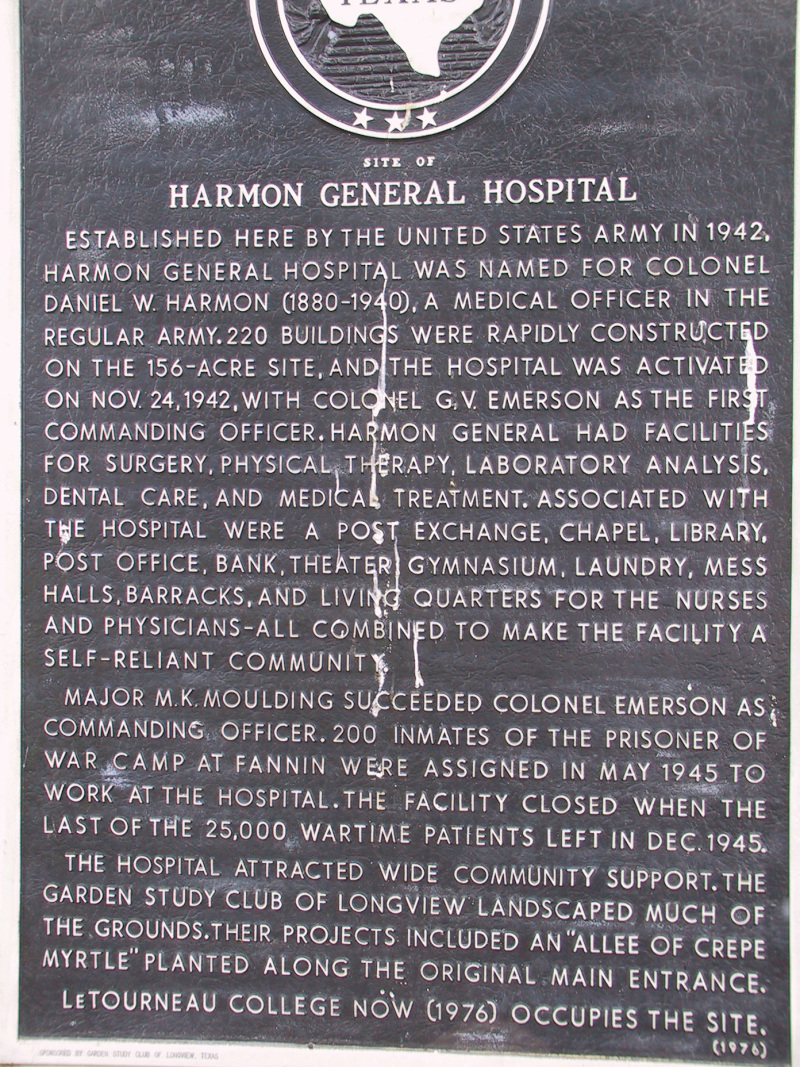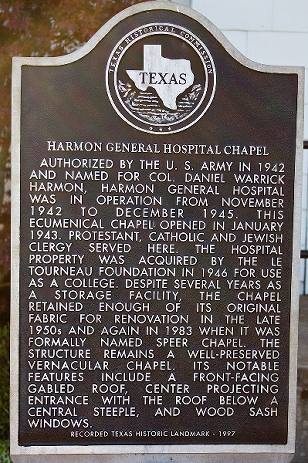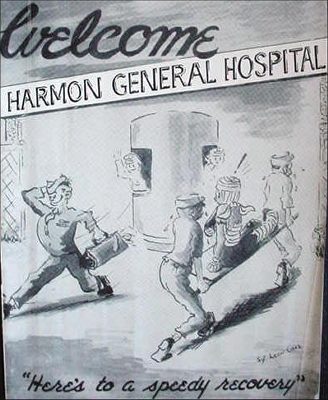Wiley G. Clarkson,
Architect
Corsicana:
June 1908 to Dec. 1911
Fort Worth: Jan.
1912 to May 5, 1952
Return to
Main Menu Return
to
Projects Menu
email
Last
update: Aug 12, 2014
Federal,
State, County, & Local Government Projects
in various
towns
During 1933, Wiley G.
Clarkson was appointed Chief Architectural Supervisor for the
105 Counties of Northwest Texas, Federal Housing Administration.
He also designed numerous projects that received WPA funding.
The Federal
Courthouse in Fort Worth
1932
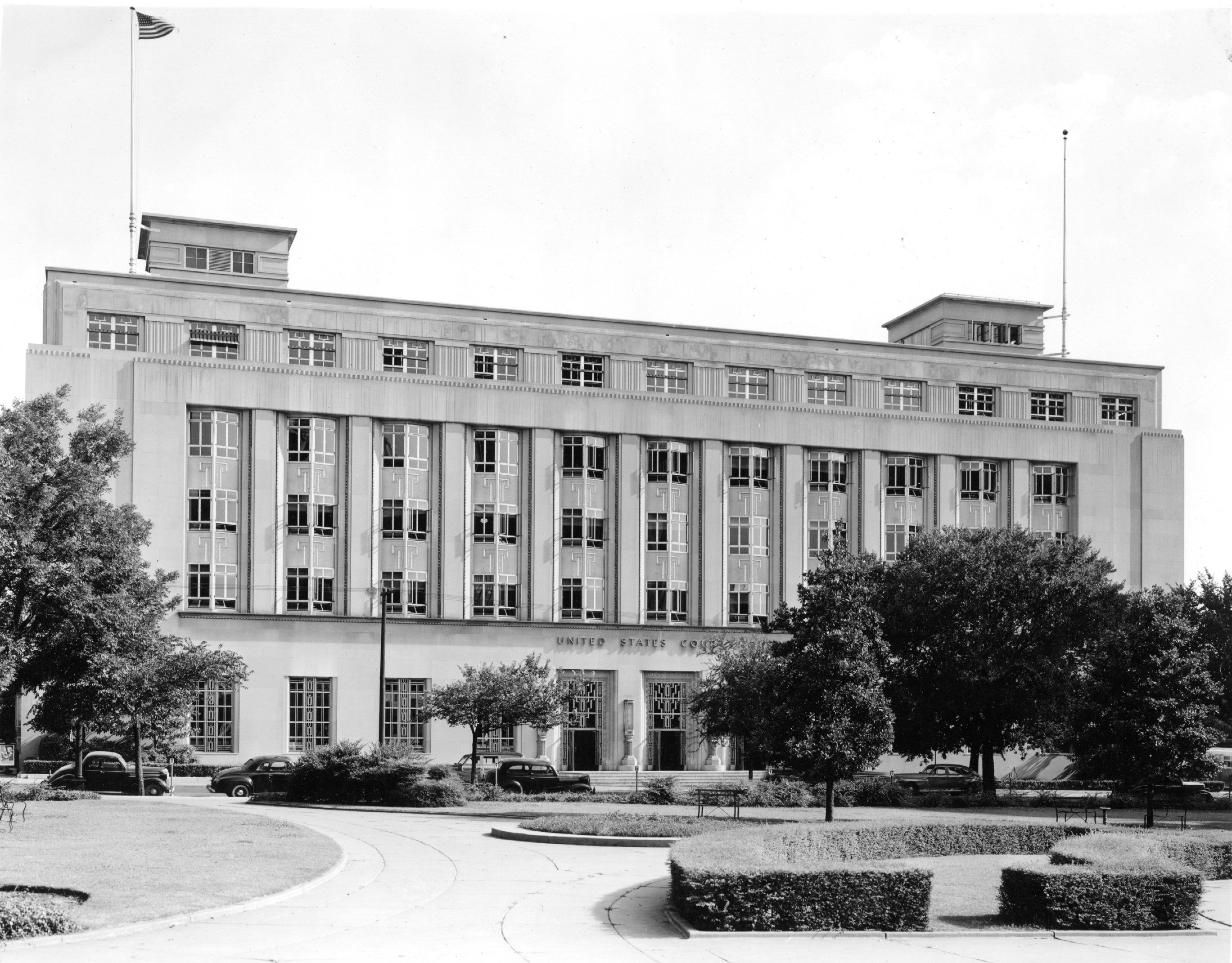
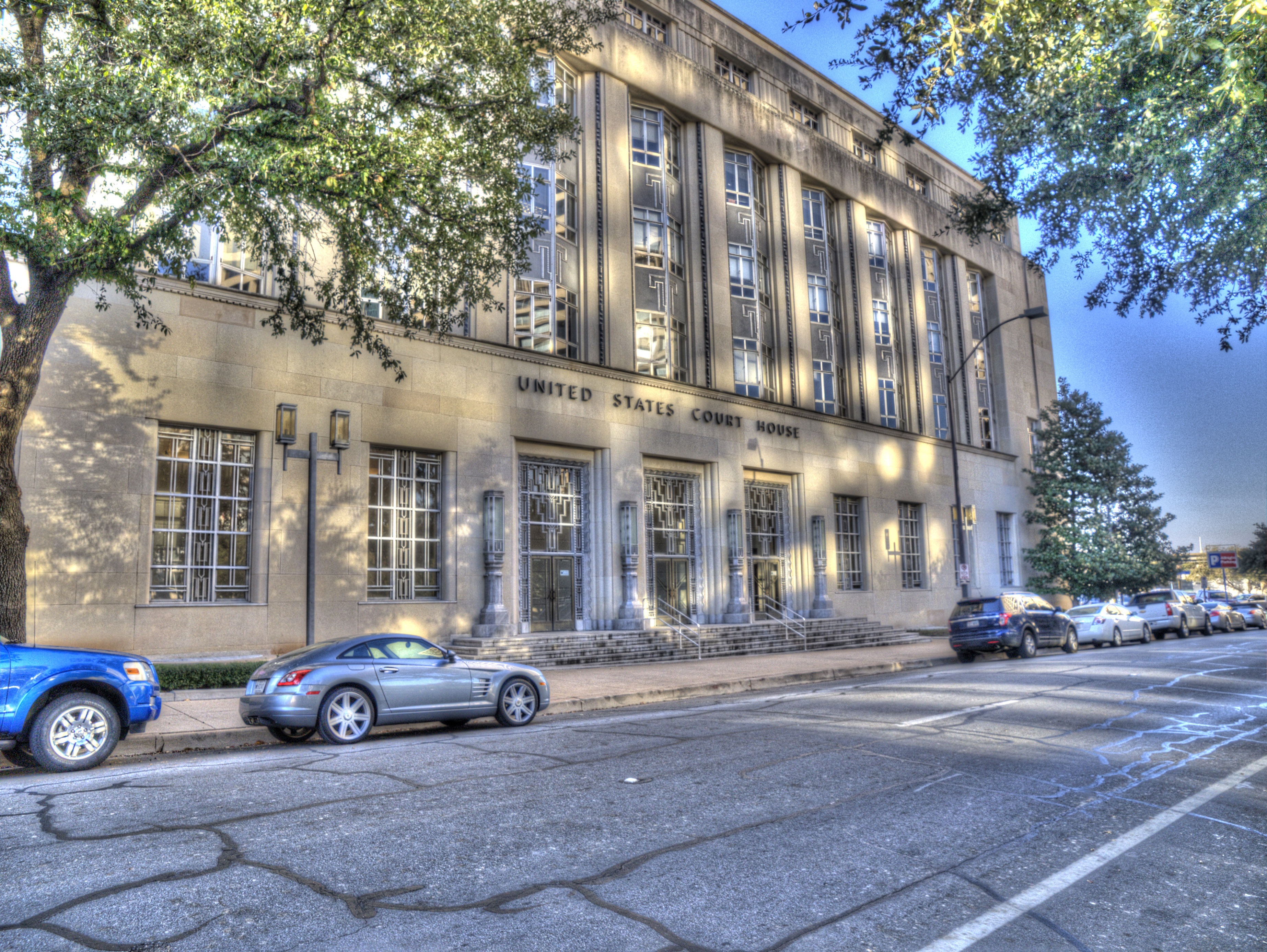
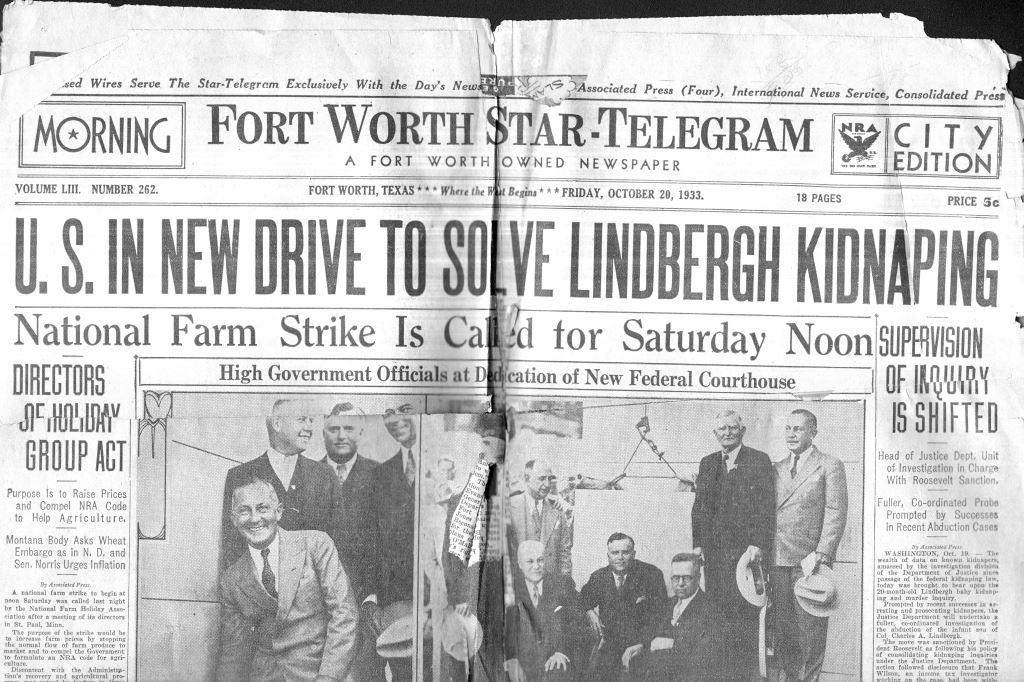
Fort
Worth
Star-Telegram,
Oct.
20,
1933,
front
page.
Story
and
photos
of
the
dedication
of
the
Federal
Courthouse
in
Fort
Worth.
My
grandfather
is
shown
with
other
men
who
were
there
for
the
dedication.
The
left
photo
has
the
following
men:
In
Front:
Lawrence
W.
Robert
Jr,
asst.
Sec.
of
Treasury.
Behind
him
left
to
right:
pres.
of
the
Federal
Business
Assoc.
J.
C.
Carpenter,
architect
Wiley
G.
Clarkson,
and
federal
construction
engineer
C.
C.
Converse.
The
right
photo
from
left
to
right:
Postmaster
General
Farley,
Farley,
S-T
publisher
Amon
G.
Carter,
US
Congressman
Fritz
Lanham,
architect
Wiley
G.
Clarkson,
Pres.
FBA
J.
C.
Carpenter,
VPoUSA
John.
N.
Garner,
and
asst.
Sec.
of
Treasury
Lawrence
W.
Robert
Jr.
Another
photo
showed
a
huge
crowd
jamming
the
streets
around
the
courthouse.
Of
course,
the
"real"
news
headline
is
obvious!
Archer
County, Texas
Archer County
Court House
Archer City,
Texas
Shelf 3 Job 359
The original Archer County
Court House was a two story building with a tall central tower.
In 1926, my grandfather was retained to add a third floor for
offices to the court house. The amount of money he lists
in his professional record covering the years 1925 to 1947 as
being the cost of the project is $80,000.00. The tower was removed, the
third floor added, and a different roof added. My
grandfather assigned the design work to an employee who was a
designer/architect named Elmer G. Withers. In 1928,
Withers established his own architectural firm in Fort Worth.
Several of Fort Worth's future fine architects
had their start working for my grandfather.
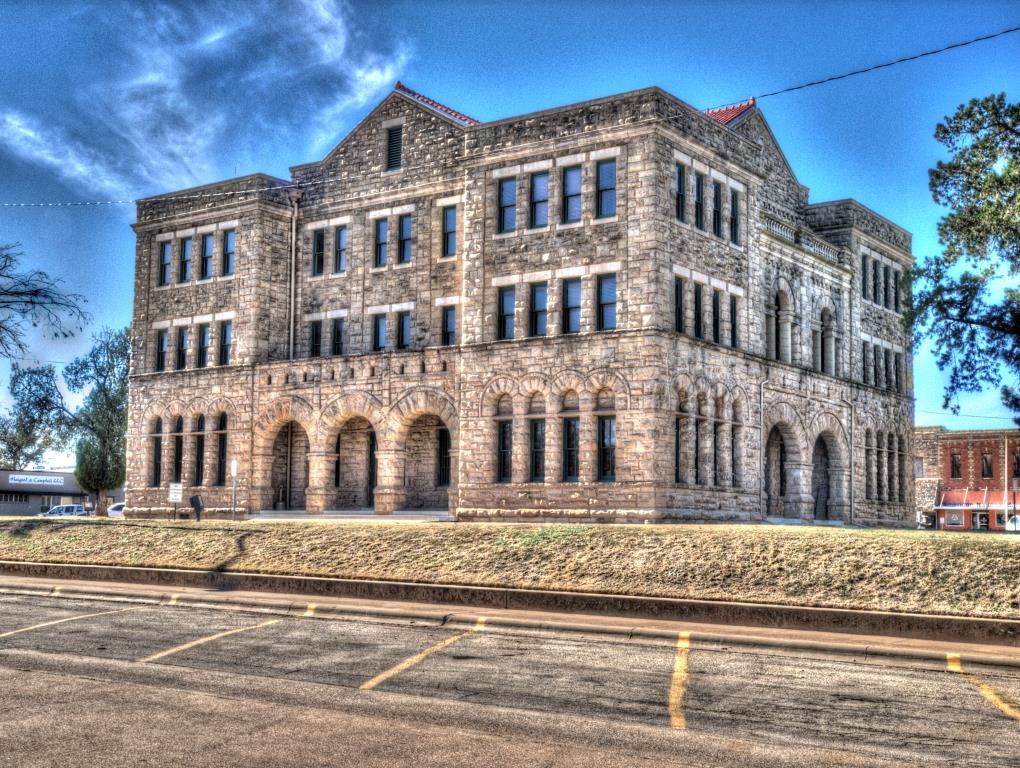
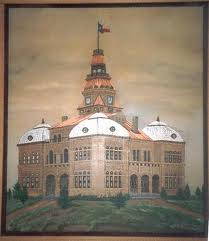
The 1892 Archer County Court House before
the remodeling and expansion.
Tyler County
Courthouse
Woodville, Texas
Job date: 1935 No Job
Number available.
When reviewing a newly
found job inventory list from April, 1946 and job
listed as the Tyler County Courthouse was noticed. There was no number
attached to the job or date. A search on the
internet for information on the Tyler County Courthouse turned
up the web site of architect Leonard Lane, of Houston, who
has been photographing every courthouse in Texas and publishing
the photos and a history of the courthouse on his web site
254 Texas Courthouses. He has a historical write up of the courthouse that helped
pin this down as one of Clarkson's projects in 1935 to
1937. The
original courthouse was designed by the Corpus Christi
architectural firm of Glover and Hodges in 1891 and constructed
by the contractors M. A. McKnight and McKnight from 1891-1892.
The original courthouse, shown in a THC photo below, was the
typical design of the period. In 1935, the county
commissioners decided to do a
massive remodel and expansion project on the courthouse and used WPA
funding for
the project. During this time, Clarkson was one of the
principle architects for the WPA. He designed a number of
WPA projects, which included schools in the north Texas area.
Clarkson has already used similar features in other projects from about
1928 -1935 in Fort Worth that are still in use today, unchanged
from when they were built and some having historical markers
assigned to them.
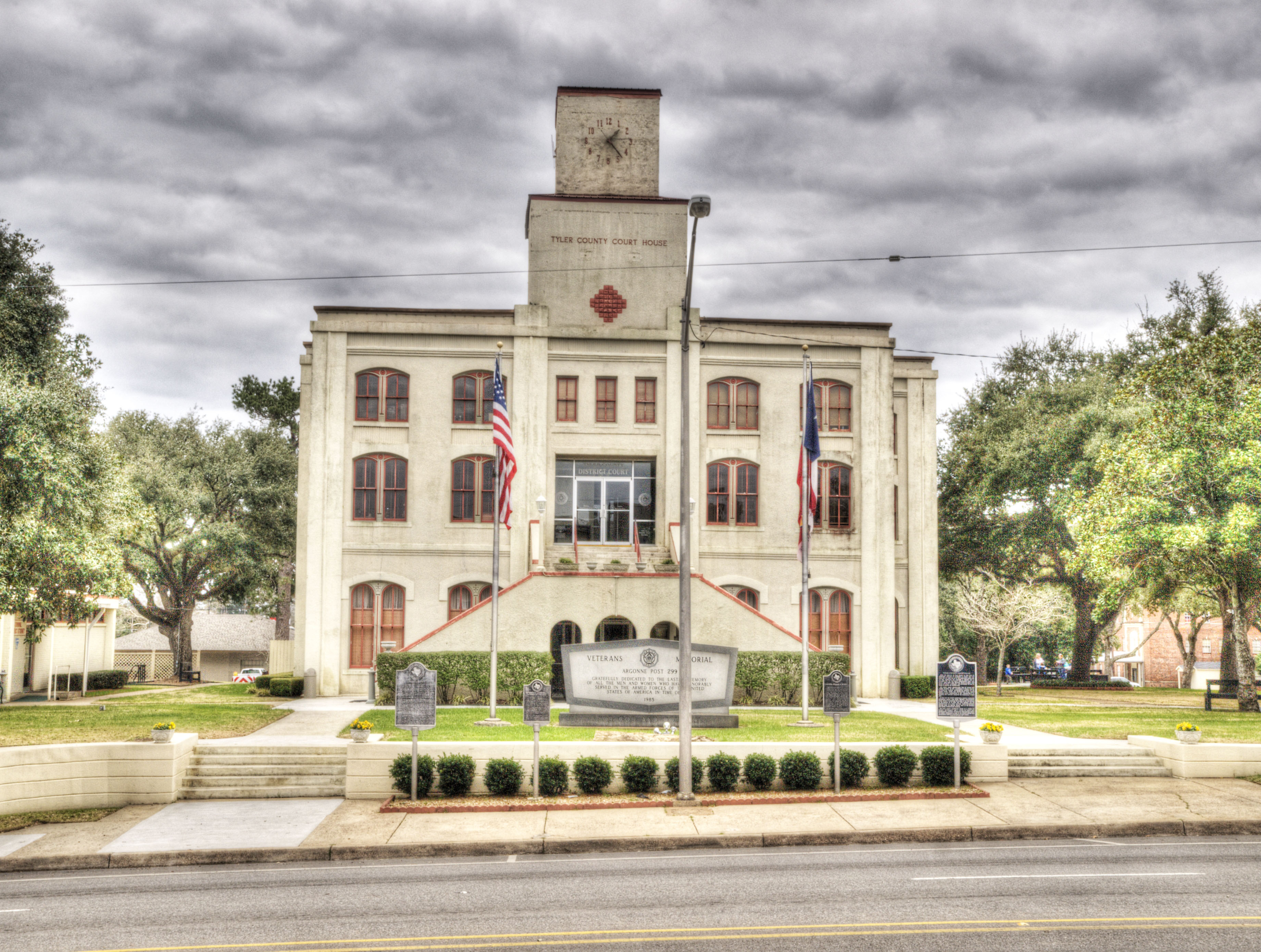
Tyler County Court House
in Woodville, Texas, Feb. 1, 2014
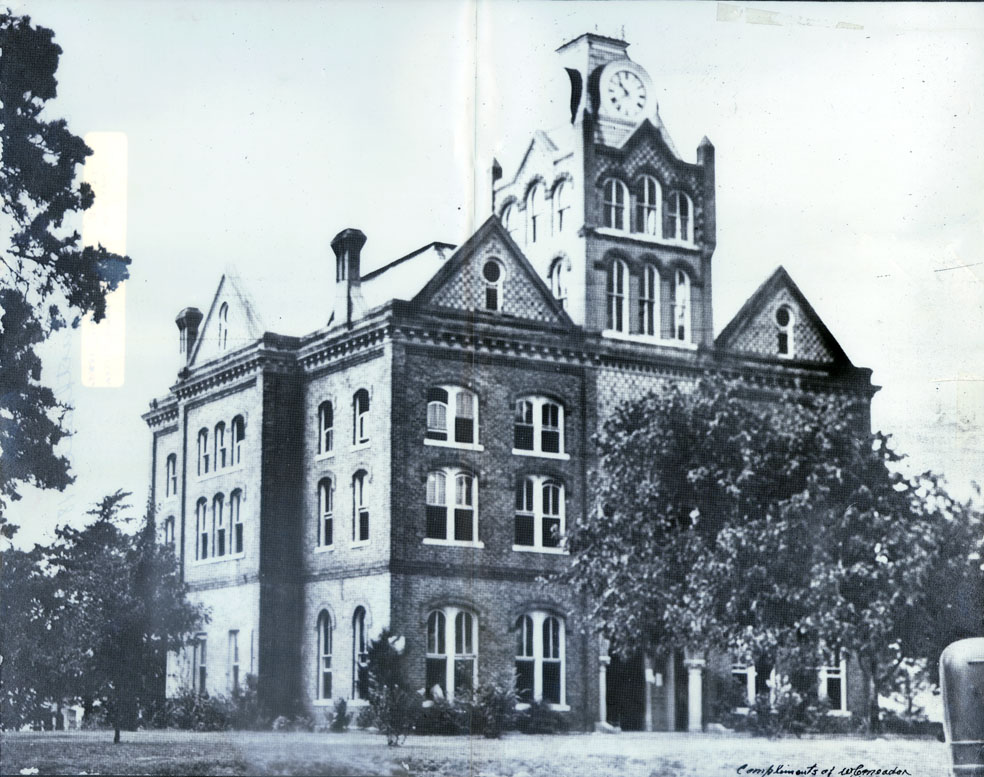
THC photo of the 1892 Tyler County Courthouse
in Woodville,TX
Wichita Falls,
Texas
1916 Wichita
County Courthouse
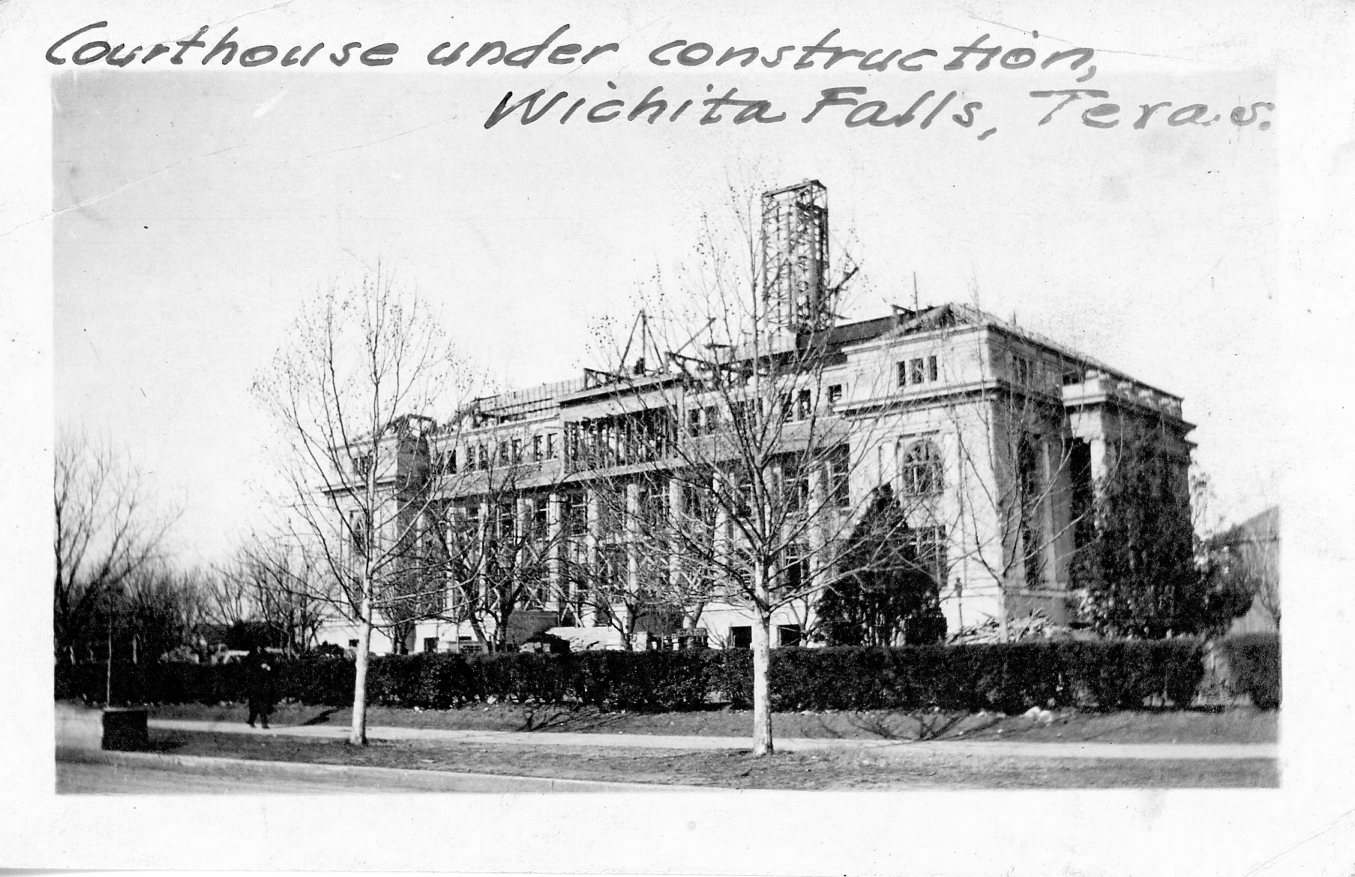
This photo of the
Wichita County Courthouse was in a box of old Clarkson records.
It was the first recorded mention of this project. During 1915 and the years following,
he and Fields established a second office in a town that appeared to
be on the verge of an economic explosion after oil was discovered in
the area surrounding Wichita Falls. Fields handled the Wichita
Falls office with the help of another architect they hired.
Large jobs would be divided between the him and Fields. A Google
search on the 1916 Wichita County Court House found a web site
called TexasEscapes.com that had a page about the
courthouse. They had the following on description on that
page:
The Wichita
County Courthouse is a 1916 courthouse that has been totally
remodeled except for an original courtroom on the fourth floor
The 1916 Wichita
County Courthouse
before the 1961 and 1980s remodeling
Architect: Fields
& Clarkson and Sanguiner & Pate
The courthouse has gone
through two times of remodeling and no longer bares a resemblance to
the 1916 Courthouse.
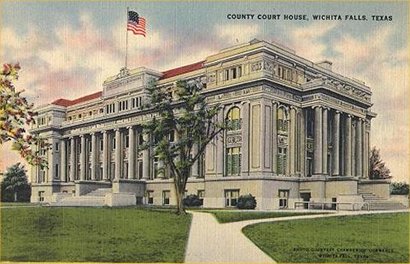
Temple, Texas
In 1942, Clarkson, in
association with three of the leading architects in Fort Worth, Pelich,
Geren, and Rady and
working for the U. S. Housing Authority and O. S. Engineers, designed
the McClosky Army Hospital located in Temple. At the same
time, they also designed Liberator Village, Fort Worth; Army Air
Force Station, Childress; Harmon Hospital, Longview, and Housing
Work at McGregor. The aggregating amount of money for this
work was in excess of $25,000,000.00. The McClosky Hospital
eventually became known as The Olin E. Teague Veterans
Aadministration Center. Many of the original buildings are now
torn down. Some of the buildings have been replaced while
others have open areas. The main hospital building shown below
with the flags in front has been added to over the years. The
old hospital wards and treatment areas have been reduced in number
from what is shown on the drawing my grandfather made. The
church building appears to be unchanged except for possibly lack of
use (from what I could see, at least). In the last several
years, the Army seems to becoming less supportive of religion so
this building may end op on the demolition list.
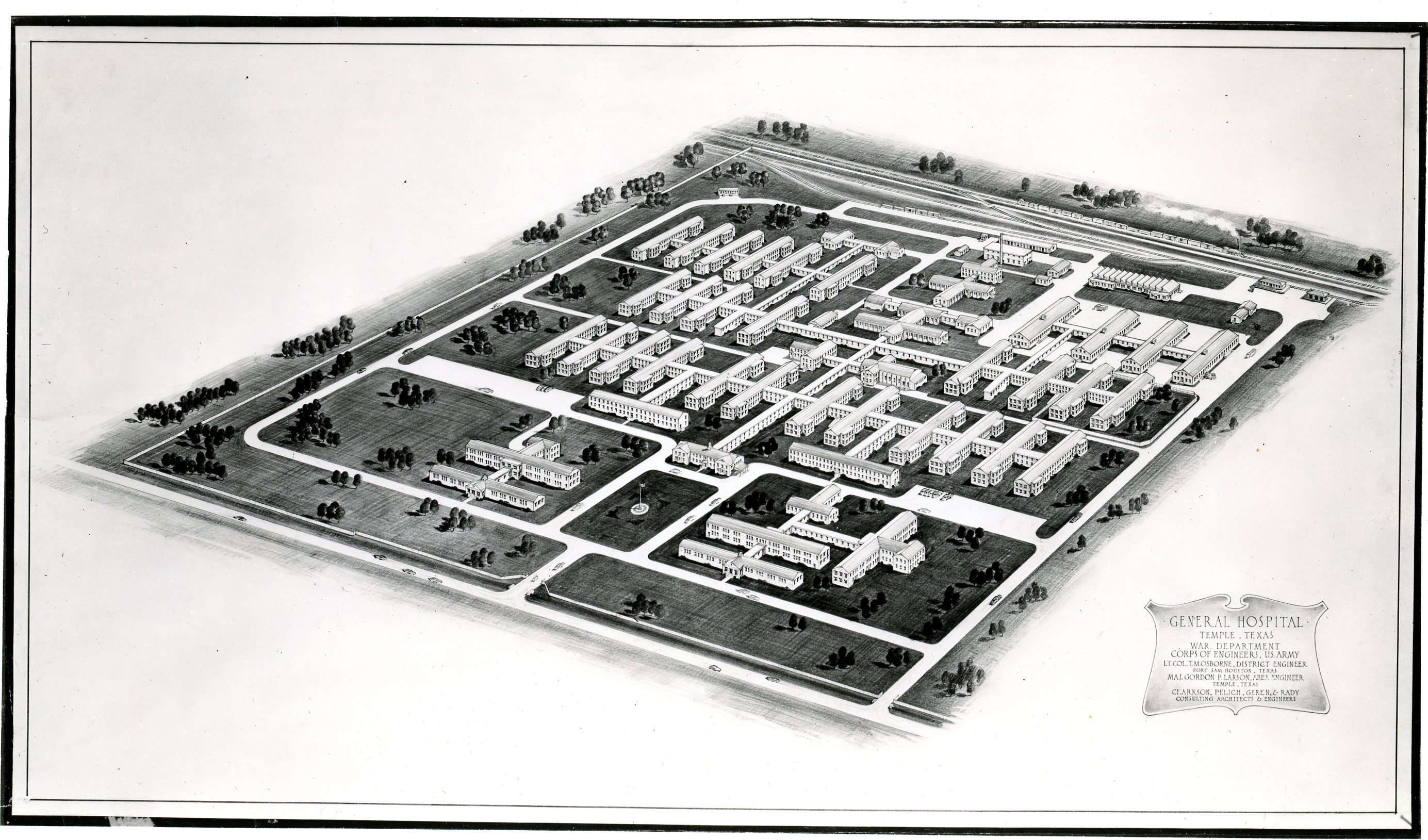
The above artwork was produced by
Clarkson, Pelich, Geren, & Rady: Consulting Architects and
Engineers.
W. D. Smith photographed and
reproduced photographic prints of the original art on May 1, 1942.
T
Many of the original buildings have been demolished and replaced.
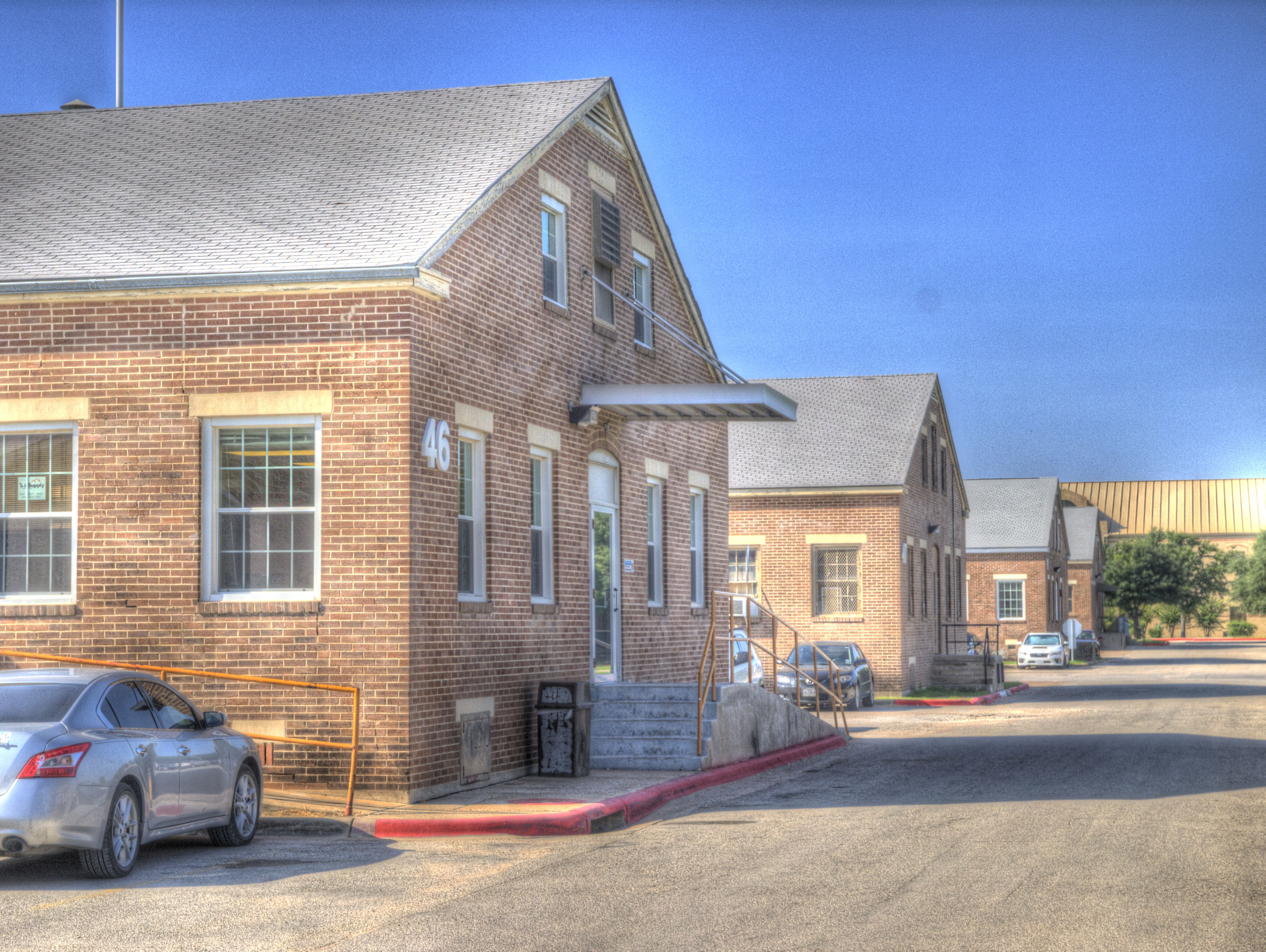
The housing wards were
all connected by hallways making it possible for personnel to
move between the wards without having to go out into the
weather. The four units pictured above were still
connected (see the first image above).
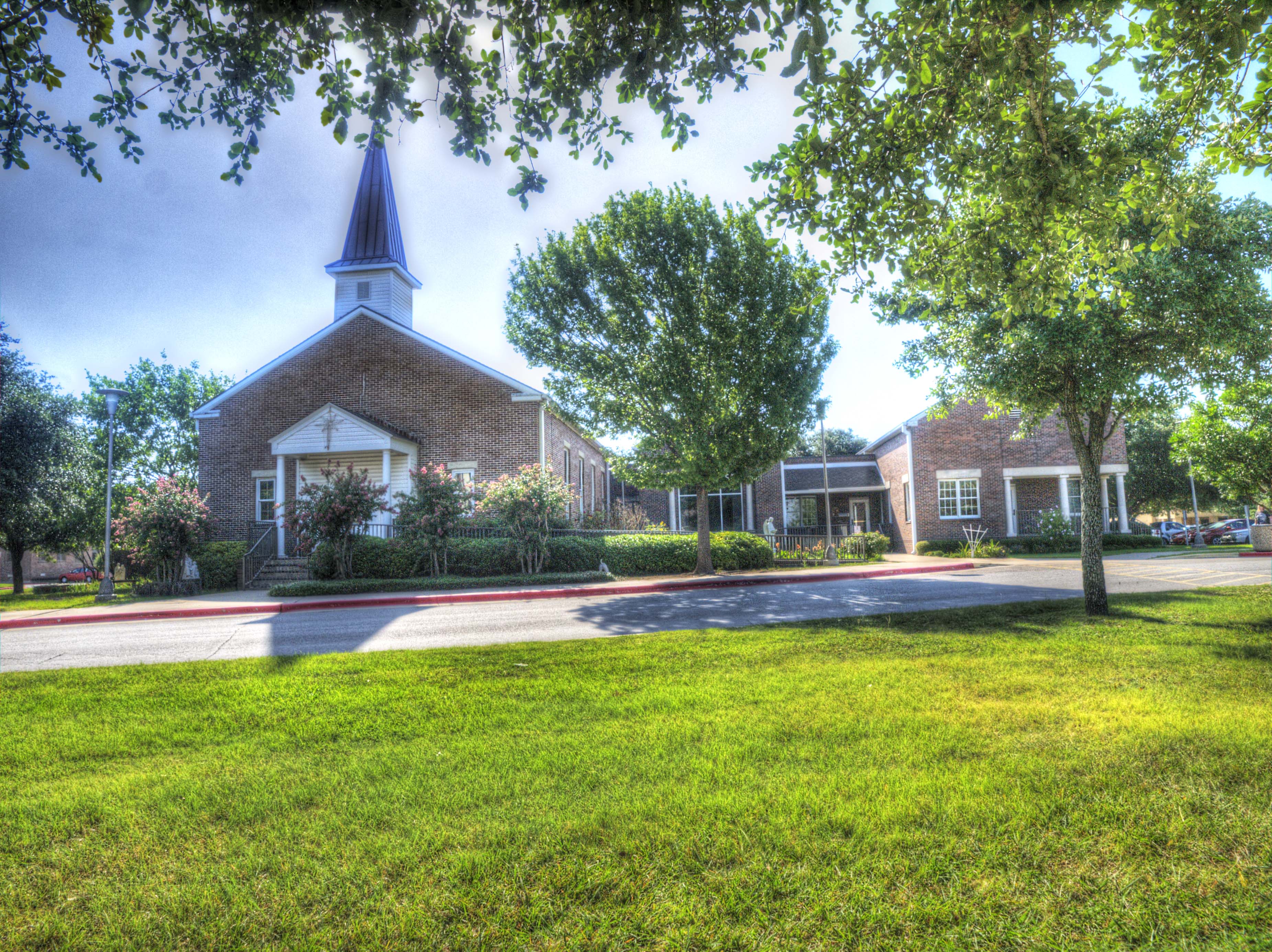
The church building shown
above shows the connecting hallway that was typical of all the
building connections.
The Harmon
Hospital
no photos of the
hospital have been located
Established by the United
States Army in 1942, Harmon General Hospital was named for Colonel
Daniel W. Harmon (1880-1940), a medical officer in the regular Army.
220 buildings were rapidly constructed on the 156-acre site, and the
hospital was activated on Nov. 24, 1942, with Colonel G. V. Emerson
as the first commanding officer. Harmon General had facilities for
surgery, physical therapy, laboratory analysis, dental care, and
medical treatment. Associated with the hospital were a post
exchange, chapel, library, post office, bank, theater, gymnasium,
laundry, mess halls, barracks, and living quarters for the nurses
and physicians -- all combined to make the facility a self-reliant
community. Major M. K. Moulding succeeded Colonel Emerson as
commanding officer. 200 inmates of the prisoner of war camp at
Fannin were assigned in May 1945 to work at the hospital. The
facility closed when the last of the 25,000 wartime patients left in
Dec. 1945. The hospital attracted wide community support. The Garden
Study Club of Longview landscaped much of the grounds. Their
projects included an allee or crepe myrtle planted along the
original main entrance. LeTourneau College now (1976) occupies the
site. Designed in association with Pelich,
Geren, and Rady.
Municipal Airport
/ Meacham Field
City of Fort
Worth
listed in my grandfather's
Professional Record
Administration
Building 1936 $155,000.00
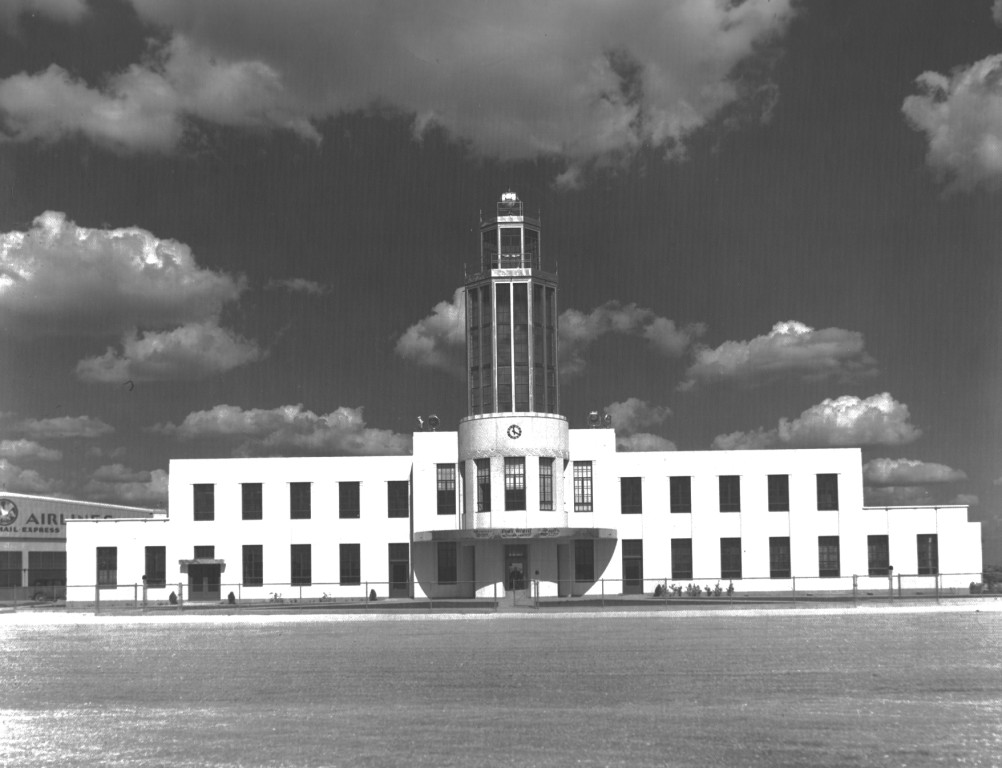
photo taken by W. D. Smith
Unknown job at
Meacham Field 1945 $35,000.00
Municipal Airport
Tower 1943 $9,000.00
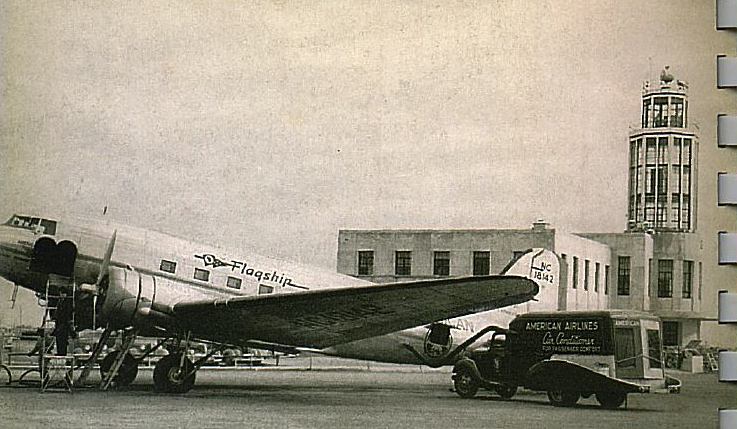
W. D. Smith Photo
\
Army Air Force
Station
Childress, Texas
1942
designed when
associated with the firm of
Clarkson, Pelich,
Gerens, and Rady
Work done for the
U. S. Engineers
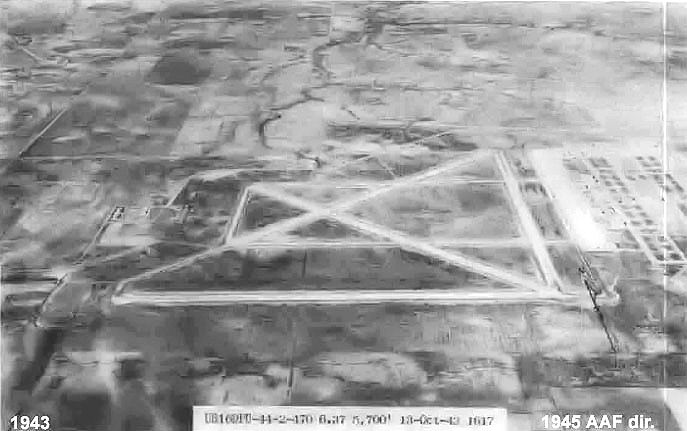
Liberator
Village, Fort Worth
designed when
associated with the firm of
Clarkson, Pelich,
Gerens, and Rady
Work done for the
U. S. Engineers
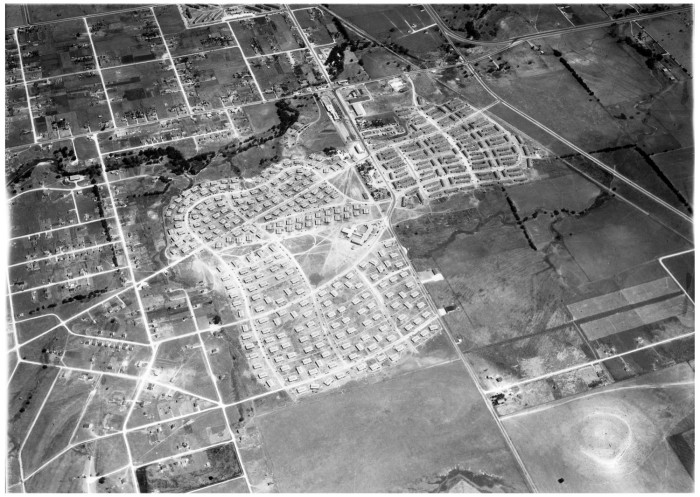
The Liberator Village
was the government housing area for employees of the
Consolidated Aircraft Corporation aircraft manufacturing plant.
Liberator village was constructed after April of 1942 to house
workers who were having a hard time finding housing. These
workers built the B-24 and B-32 bombers during the war, and
later built the B-36, and B-58 bombers. Consolidated
Aircraft Corp later became General Dynamics, and eventually
Lockheed Aircraft. Liberator. Liberator Village was
officially closed in 1955.
Federal Housing
Project in McGregor, Texas 1942
Numerous searches of the
internet has produced little information on this project.
What I do know is that in 1942, work was begun on Fort Hood Army
Base and that 300 families were forced to move out of their
homes for Fort Hood expansion. This project was
to help the displaced families from the Fort Hood expansion with finding homes.
Schools and most
hospitals also fall under the government umbrella but they
are listed on separate pages.
Ripley Arnold
and Butler Place Housing Project's
1938 - 1940
1947 Professional Record
This photo is an aerial photograph shows the Ripley Arnold project.
Clarkson was the Chief Architect with five associate architects: Whithers, Geren, Pelich, Crane, and Hedrick. The Fort Worth Chamber of Commerce has this information about the project:
"Fort Worth’s first public housing development, completed in 1940, was named to honor Major Ripley Arnold, commanding officer of the Fort on the Bluff overlooking the Trinity River that became Fort Worth (1849). Six local architects designed the apartments in 1938 to provide affordable housing for low-income white tenants. Butler Place, several blocks east, was built at the same time for African-American residents. Funding for the 252 modernistic brick and concrete dwellings came from the United States Housing Authority and the sale of City of Fort Worth Housing Authority bonds. Twenty-eight new homes were added in 1962. Units were racially integrated in the 1960s and air conditioning was added in 1996. Ripley Arnold Place was sold in 2001; its proceeds provided seed money for mixed income developments in neighborhoods throughout the city. This new housing created better environments for residents and their families."
The Ripley
Arnold Housing project has now been demolished. The Butler
Place Project is still in use and
was listed on the National Register of Historic Places in 2011.
From the
National Register:
“The
Butler Place Public Housing
Project was one of fifty-two
Public Works Administration
low-income housing projects
built in the United States. The
complex is significant for the
manner in which its
architectural design and site
organization expressed the
social ideals and planning
standards of the period, in
compliance with strict federal
Public Housing Administration
guidelines…
Modernist
design principles stressed form
and function, rejected
superfluous ornamentation, and
incorporated a philosophy of
social change. Consequently,
these principles were employed
in some of the first federally
funded public housing projects
such as the Carl Mackley Houses
in Philadelphia in 1935, and
Cedar Springs Place in Dallas,
which was constructed in 1937.
Wiley G. Clarkson and associate
architects also applied these
modernist ideals at the Butler
Place and Ripley Arnold housing
projects in Fort Worth in1939.
Their organization to provide an
open atmosphere of light and air
also found inspiration in the
Garden City Movement. According
to Judith Johnson’s The Art of
Architecture: Modernism in
Memphis 1890–1980, these design
principles were based upon the
theory that a housing project is
not merely a collection of
dwelling units, but that it
provides the basis for a way of
life for its inhabitants within
the planned framework of a
neighborhood…
At
Butler Place, the brick veneer
buildings were designed in a
stripped or minimalist
adaptation of the Colonial
Revival style, which was popular
for domestic architecture in the
United States in the early
twentieth century.”
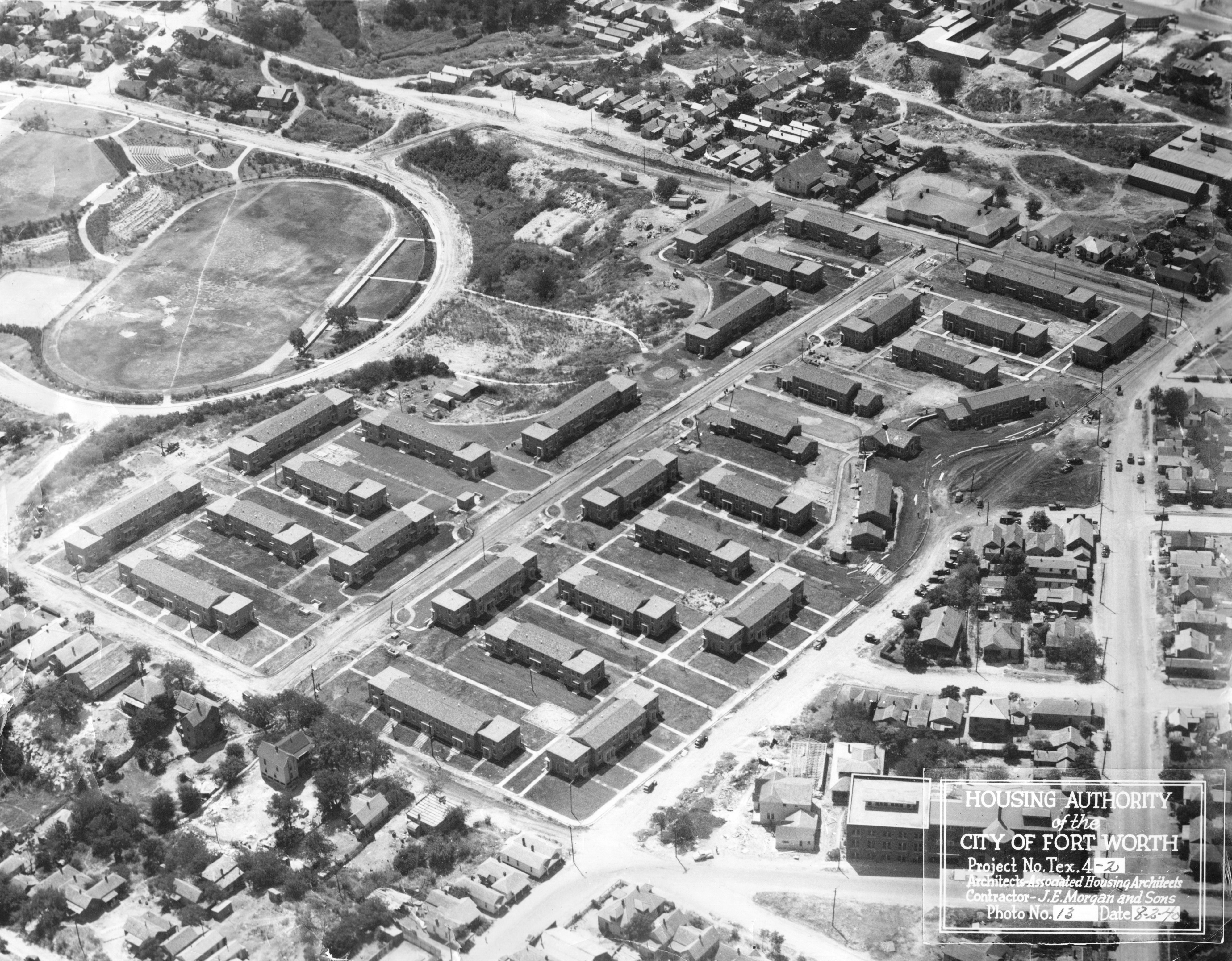
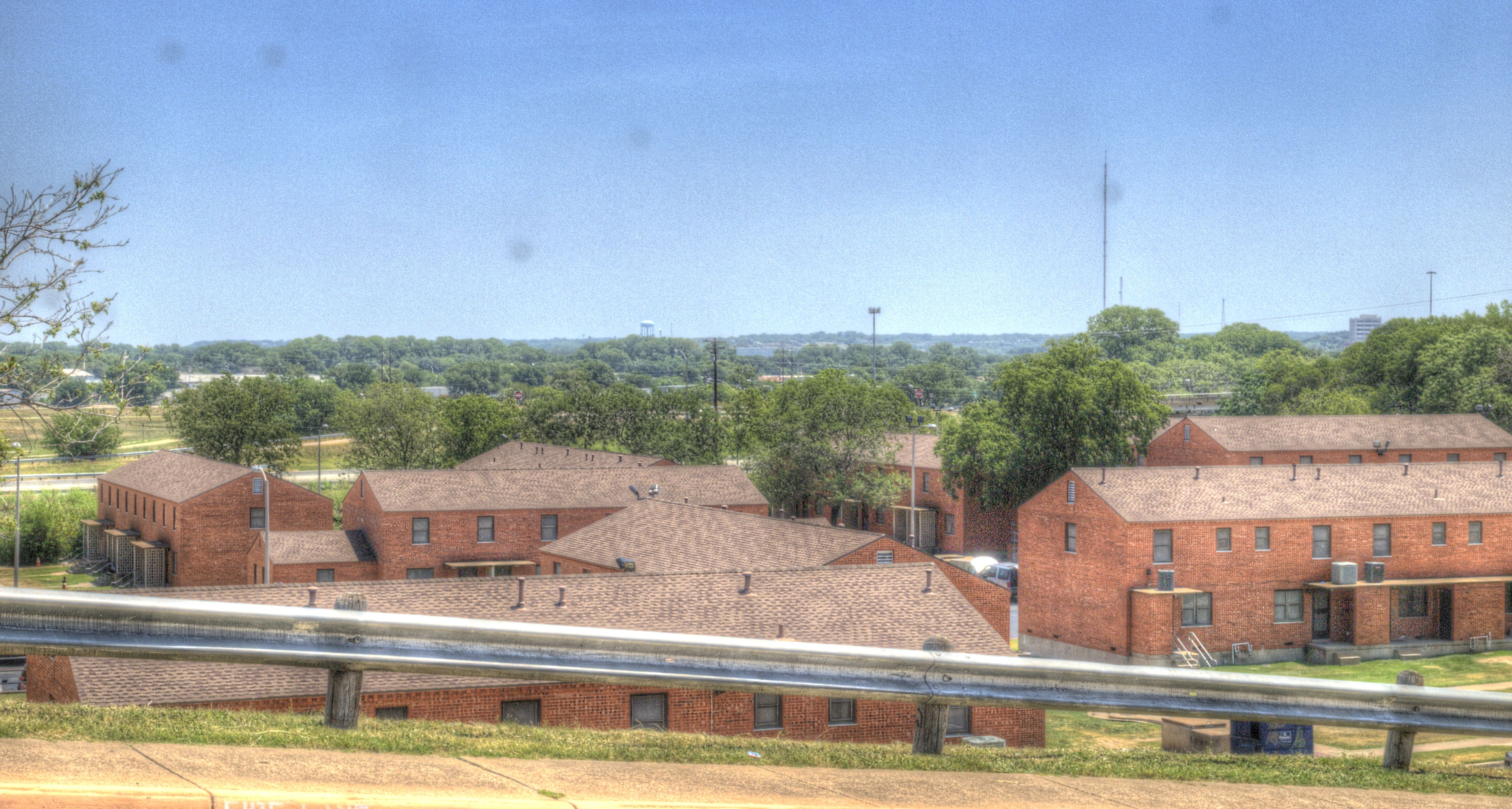
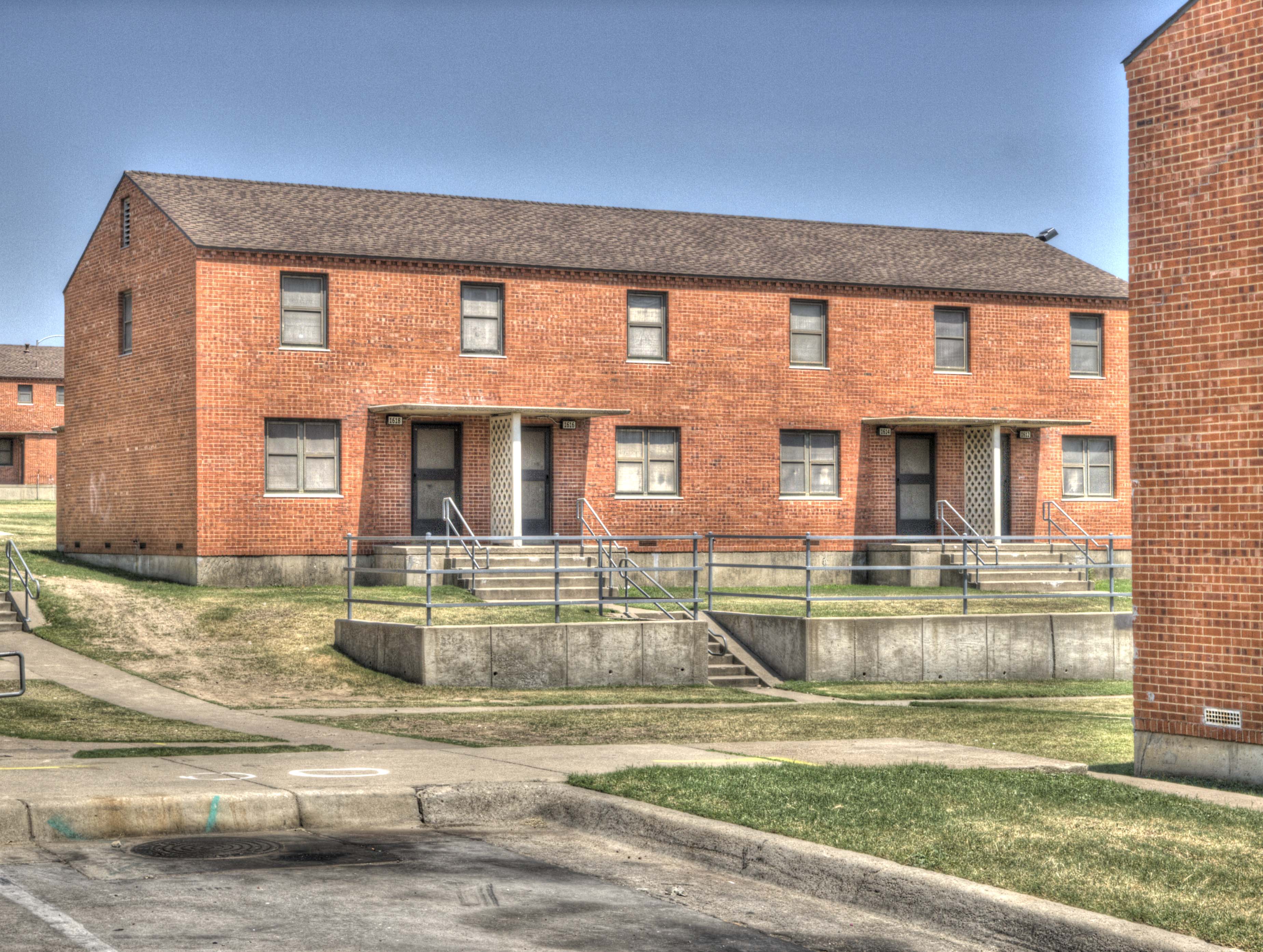
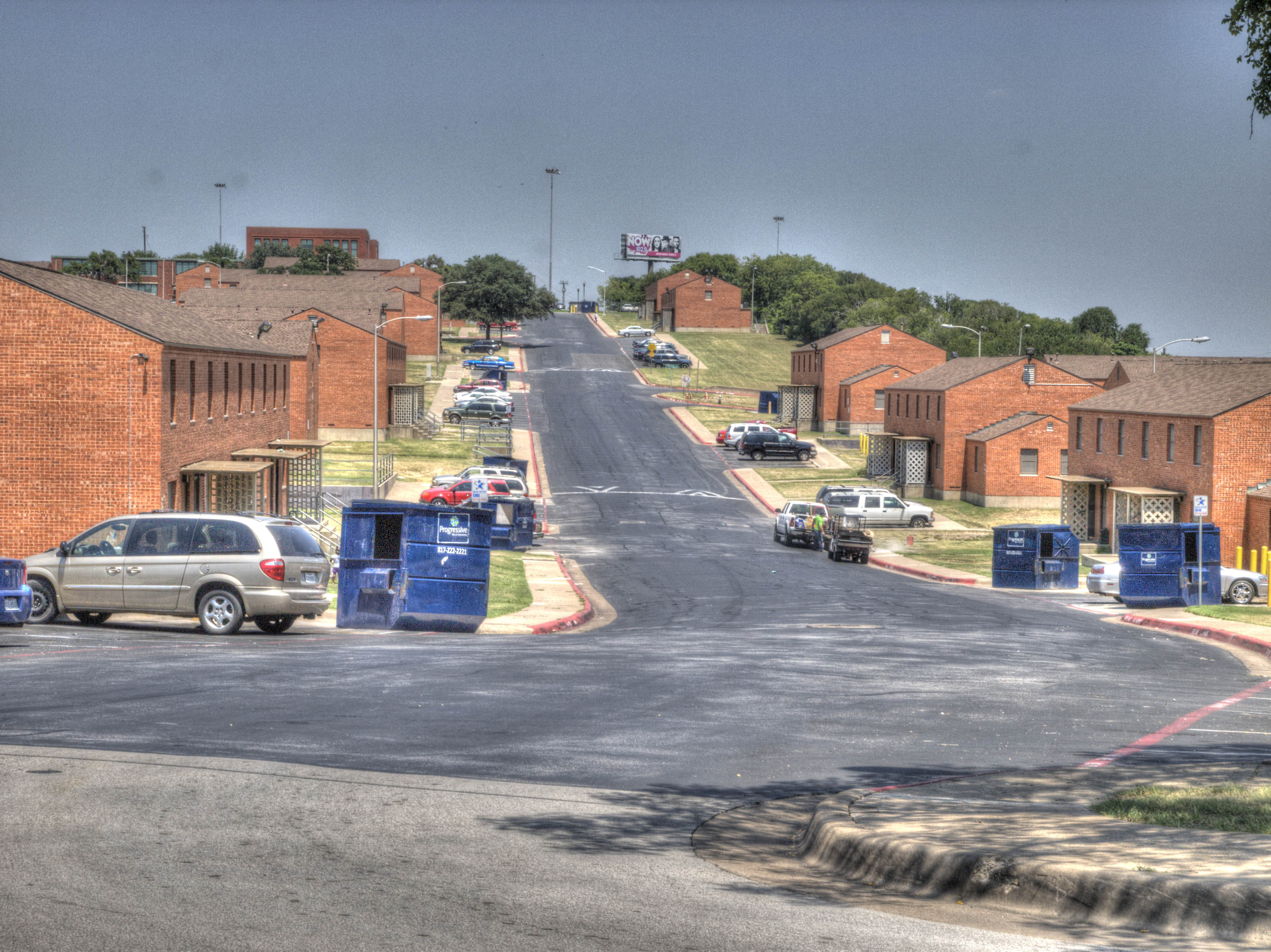
Grayson County
Airport
2.5 miles south of
Pottsboro
announced in a
Dallas Paper on 08/20/1940
Some time in the
1930's Clarkson formed an airport design company. From
what little info there is on this airfield, it probably
started out as a commercial venture by Denison and Sherman. In the
Spring of 1941, Grayson County leaders leased it out to the Army Air Force
as a pilot training base.
In 1940, Clarkson had already taken on a large scale
government contract in Fort Worth. As the war started up, he took
on more and more defense related contracts with several other
leading architects in Fort Worth. From a description below,
the design of this air field is similar to the Childress airfield
using a triangular pattern for runways. After the war ended,
this pilot training facility became Perrin Air Force Base. It
closed in 1971 and returned to being what had been originally
planned as a general aviation airfield. For more information:
Airfields
announced in a
Dallas Paper on 08/20/1940













